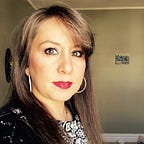Opera and its magical ingredients
‘Definition of Opera: (Oxford Dictionary) A dramatic work in one or more acts, set to music for singers and instrumentalists.
Definition in Art :
Opera is an art form in which singers and and musicians perform a dramatic work combinin text ( libretto ) and musical scene, usually in a theatrical setting. In traditional opera singer do two types of singing; recitative ( a speech inflected style and arias -‘more melodic style’ ) . Opera incorporates many of these elements of spoken theatre , such as acting, scenery and costumes an sometimes includes dance. The performance is typically given in an opera house, accompanied by an orchestra or smaller muscical ensemble , which since the early 1800s had been led by a conductor.
Opera is a part of Western classical tradition. It started in Italy at the end of the 16th century by Jacopo Peri’s ‘ Lost Dafne ‘ , produced in Florance in 1598, and then spreaded through the rest of Europe.
The libretto
The libretto is the ‘script’ of an opera. It can be an original creation, sometimes written by famous poets or novelists (as Hugo von Hofmannsthal and Stefan Zweig for Richard Strauss’s works), but often it is an adaptation of plays (Shakespeare was a great source of inspiration for librettists), tales or novels. The subjects developed in libretto are various: forbidden love, infidelity, revenge, craving for power, war, ancient myths or historic events…
With such subjects, opera inhabits a universe where human passions explode. Love, Tragedy and Death are often at the heart of the plot. The characters, sometimes torn between their feelings and their duty, are confronted with extraordinary situations and are carried away by heightened feelings. This excess burns them, leading them to commit acts of violence and sometimes to death. Love at first sight, sacrifice, enchantment, courage, suicide and murder appear together in the libretto. Some characters are punished for their crimes, other find redemption or are stricken with remorse… and sometimes there is a happy ending!
The singing
Unlike most theatre, the text is sung by the artists in operas. The emotion and the intensity of singing have an impact on the weight and the meaning words.
There are different voices classified in six principal categories, from the more high-pitched to the lower: soprano, mezzo-soprano, contralto for women; and tenor, baritone and bass for men. Moreover, voices are characterized according to their power and agility: they can be light, lyric or dramatic. A light voice is not very powerful but can easily reach the high notes and vocalises, unlike a dramatic voice which is powerful but less agile.
Voices are generally associated with types of roles. They emphasize some aspects of the characters like their personality or their nature. In Bizet’s Carmen, Carmen is a wild seductress who has experience of the world: so she is played by a mezzo soprano with a dark and warm voice. Gilda in Verdi’s Rigoletto is a lyric soprano: her clear and high-pitched voice symbolizes her purity, innocence and naivety.
You may also look at the ‘Glossary’ page to find out more about opera voices.
The music Music expresses in another way the emotions and the action taking place on stage. In the mind of the camerata fiorentina(see ‘History’ page), whose researches and studies on Ancient Greek theatre led to the creation of the operatic genre, the music was at the service of the libretto: ‘Prima le parole, dopo la musica’ (‘The words first, the music after’). But this conception is questionable. It is an old and continuing debate: according to the eras, libretto and music have alternately claimed primacy.
Actually music does not only serve the libretto and the singing: it completes and exalts them by highlighting the intensity of situations and the characters’ passions and feelings.
By playing with rhythms, tones, melodies, nuances, the composers exploit the extraordinary suggestive power of the music in order to create particular atmospheres that lyrics or staging can not create. Some authors use recurrent musical motifs to represent a character, an emotion or a concept. In the prelude to Das Rheingold, Wagner manages to relate the Rhine’s birth. The opera begins with a unique triad which slowly emerges from silence and resonates in infinite depths: the Rhine comes out of original chaos. Little by little motifs add to this triad until creating a melody: first brass instruments, majestic, then strings, more ethereal, like sparkling waves on the river’s surface. The more the orchestra becomes animated and enriches the prelude, the faster the motifs become as the more the Rhine swells and stirs, until foaming.
” Music is beyond words. It addresses directly the audience’s heart and appeals to its sensibility and imagination.”
- Types of Opera
– Comic Opera : Also known as light opera. this type of opera often tackles light, not so delicate subject matter where the ending often has a happy resolution. La Serva Padrona ( the maid as Mistress ) G.B.Pergolesi.
– Serious Opera: Often the story revoles around heroes and myths, emphasis is also given to the solo voice and bel-canto style. Rinaldo — Handel .
– Opera Semiramise: This type of opera has a serious story but has a happy ending. La Gazza Ladro.
– Opera Cornique: it’s type f french opera wherein instead of singing, the lines are spoken. In its early form. it was satirical but would later on have serious storylines such as Carmen by G.BIZET .
Sources : Wikipedia-Opera Europa
